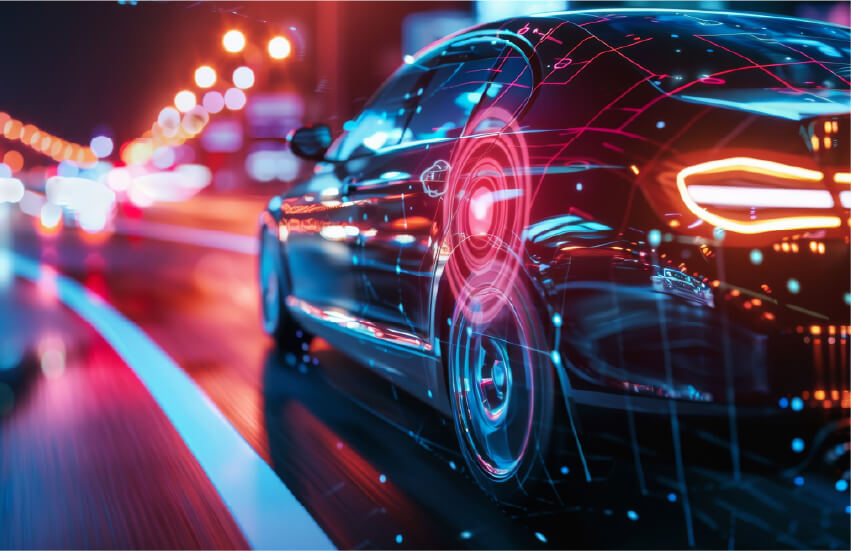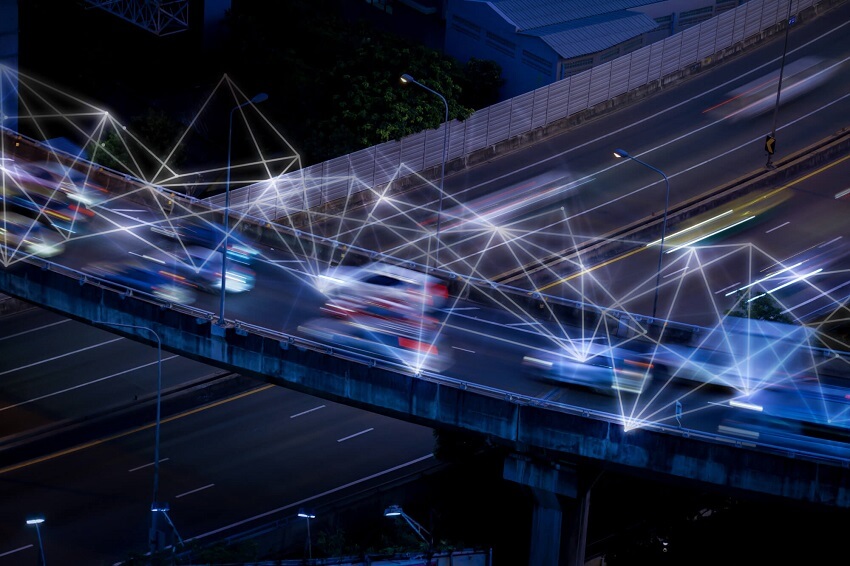How mobile networks help aftermarket telematics deliver real-time services
by Webbing Team | October 15, 2025
Beyond connected car services that have to do with the car itself, such as diagnostics and maintenance, there’s a big layer of driver-centric services that live “around the car” and depend on cellular connectivity. They offer many features, including tracking, roadside assistance, stolen-vehicle recovery, usage-based insurance, etc. But what is probably more important, they can be delivered regardless of factory options by using the aftermarket car telematics hardware.
Connected cars have become mainstream, with most major automakers rolling out mass-market services in key regions. While these OEM programs do compete with aftermarket offerings, demand for aftermarket telematics remains strong and continues to grow in various forms. Last year, Research and Markets reported that the number of aftermarket car telematics systems in active use will grow from 87 million in 2023 to 135 million worldwide in 2028, with total shipments reaching 38.7 million units a year. Berg Insight forecasts that the growth in global shipments will be even bigger, reaching 69.3 million in 2028.
Aftermarket devices can be different: for example, there are self-install dongles for quick deployments or hard-wired black boxes for covert installs, but all of them rely on cellular connectivity to provide real-time monitoring and over-the-air updates. Cellular connectivity is critical for aftermarket car telematics because these devices must work everywhere the vehicle goes. Mobile networks provide ubiquitous coverage with low-latency uplink for time-sensitive events like crashes or stolen-vehicle alerts and a reliable control channel for commands and configuration changes.
There are multiple types of these devices, and some of them may support more than one use case. Let’s take a look at several of the most common applications.

Usage-Based Insurance
Usage-based insurance (UBI) collects driving data such as location, speed, time, and acceleration, either from a driver’s smartphone app, a carmaker’s connected-vehicle service, or a plug-in on-board dongle with a mobile network connection. The app or device sends this data via cellular network to the insurer’s system. Then the data is validated, matched to the road network, and turned into driving-behavior features that produce a risk score, which is used to personalize pricing and discounts within a usage program. Typically, there are two basic types of these programs: mileage-based, when insurer measures how many miles a customer drives, and driving-based, where driving habits are measured based on factors like how hard and how often drivers brake, how quickly they accelerate, and the time of day they drive.
The latest market update counts over 60 million UBI policyholders globally in 2025. In recent years, there has been a shift from on-board diagnostics (OBD) devices to smartphones and OEM feeds, and forecasts say that smartphone-based policies will be the majority by the 2030s. However, the number of customers using cellular-enabled dongles is still significant: in 2024, Mordor Intelligence reported that OBD devices account for about 35% of the insurance telematics market, which implies roughly 20 million devices.
OBD devices used for UBI may be equipped with eSIM (eUICC) soldered on a circuit board (MFF2 form factor) managed via remote SIM provisioning or may use removable SIMs/eSIMs.

Stolen Vehicles Recovery
Stolen vehicle recovery systems (SVR) use either the car’s built-in telematics unit or a hidden aftermarket tracker with GPS (or other radio positioning) and a cellular link. Depending on the settings, they may constantly transmit over mobile networks data on a vehicle’s position and movement, including speed and direction of travel, or idle in low-power mode and wake into higher-rate tracking when a theft is reported or an alarm triggers.
The device streams location and status to a monitoring platform that coordinates with law enforcement, and some OEM systems can assist recovery with remote slowdown or ignition inhibit features when authorized. While similar to UBI devices in terms of data they collect, SVR trackers have a number of different features. As opposed to OBD devices, they have a backup internal battery, and the transmitter is covertly installed, so there is no visible antenna or box that can be found and unplugged. Some types may include an immobilizer and multi-radio module (e.g., cellular + VHF beacon) to track stolen vehicles even when they are concealed in containers, trailers, or underground car parks.
SVR deployments run both removable-SIM and eSIM hardware, and some vendors offer the same model family in eSIM and regular SIM variants.
Starter-Interrupt Devices
Starter-interrupt devices are units behind the dashboard, which are tied to constant power and the starter relay circuit and can open that circuit so the engine won’t start. Sometimes known as a “kill switch”, these units allow lenders or dealerships to remotely enable or disable the starter under defined contract conditions. While they may incidentally deter theft, their primary purpose is payment assurance and repossession workflow support.
Starter-interrupt devices carry a SIM or eSIM and connect to the mobile network to send GPS position and receive remote commands. In addition to payment assurance controls, most units provide tamper alerts and tow detection alerts, notifying the platform instantly over cellular networks.

Connectivity Requirements Aftermarket Car Telematics
Aftermarket car telematics systems may serve different purposes, but since the data that they collect is similar, their connectivity requirements are largely aligned:
Wide Network Coverage
Without a stable connection, critical functions like real-time location tracking or OTA updates can be delayed or lost entirely. Since cars may move between cities and countries, to ensure that they remain constantly connected, it’s crucial that they can use multiple mobile networks in each region they travel to. Technically, that means that your connectivity solution should be using SIM cards that can roam across multiple networks or switch carriers, like eSIMs. Besides, that implies contracting with multiple mobile operators, which is complex and can be costly both in terms of time and expenses.
Seamless Connectivity
Having access to multiple mobile networks is helpful, but not always enough. For moving vehicles, seamless connectivity is essential. They often travel through areas with varying signal strength, and the ability to switch between mobile carriers without dropping the connection is a key feature for ensuring continuous connection. This challenge isn’t limited to remote locations. Even in big cities, certain areas may have weak coverage from one carrier but strong coverage from another.
Low Latency
Latency is a key factor for aftermarket car telematics systems because their operations depend on real-time communication. For example, stolen vehicle recovery depends on second-by-second updates, so delays of even tens of seconds may mean failed intercepts. Technically, cellular connectivity can provide better latency compared to other connectivity methods, but it should be noted that latency depends on the architecture of your provider’s core network and may vary significantly.

Webbing’s Connectivity Solutions for Aftermarket Car Telematics
Webbing offers a connectivity solution that ensures global access to reliable and high-quality internet, with low latency and the best of class coverage. It provides secure and continuous internet connection for all types of aftermarket car telematics devices, wherever and whenever they need it.
Webbing’s connectivity solutions guarantee global coverage, and through our ecosystem of over 600 mobile operators worldwide, devices can roam seamlessly across multiple carriers’ networks in every region. It solves the problem of weak spots that any mobile network may have and ensures full coverage and continuous connectivity for all devices, even at remote locations.
Webbing is a global connectivity provider with a distributed full core network with local breakouts, multiple network solution, and data server redundancy that provides connectivity stability and low latency. As such, Webbing’s network allows for realization of most complex scenarios with different types of devices, high-data consumption and industry-specific requirements.
Our eSIM solution guarantees failover connectivity with the capability of using multiple mobile carrier profiles, easily changing carriers at any time with zero integration, and an option to fall back from a failing profile to a different profile without any need to communicate with a remote server or deal with multiple SIM cards. Easily set business rules help determine automatic profile allocation based on location and enable fallback mechanisms in case of private network failure or coverage issues.
A flexible approach to data packages allows us to tailor our connectivity offering for every customer based on the type of connected devices and their data consumption needs as well as the locations where the devices are used, aiming at overall optimization of the total cost of operations for the client.
Our solutions help companies that deploy aftermarket car telematics devices overcome their connectivity challenges and optimize costs for global deployments, providing the benefits of roaming with multiple carrier options in every country, and seamless transition between carriers, public and private networks, while maintaining low rates and low latency on a global scale with a single SIM.
Reach out to learn more about Webbing’s customized connectivity solutions for aftermarket car telematics devices.




